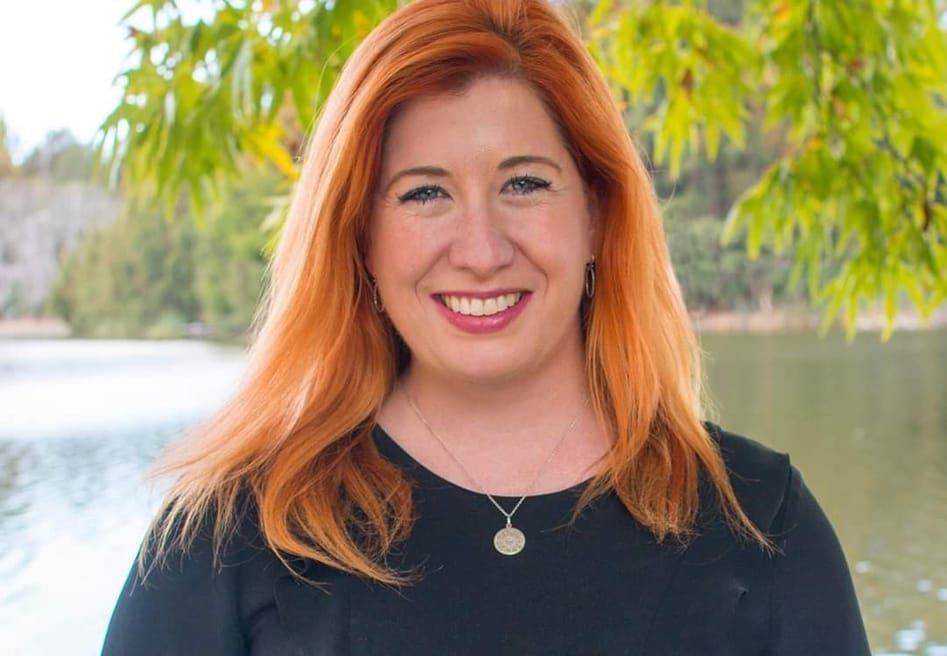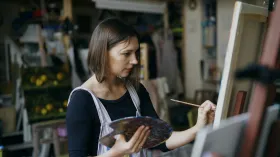Canberra has always been a place for people who embrace the arts, culture and creativity. We have consistently had and still have Australia’s highest audience participation rates, the largest proportion of creative workers, and the highest creative intensity in the nation. There is a sense that permeates the region that art isn’t always just for art’s sake – that artists are also community service providers and businesses, contributing to the social fabric of Canberra, its economy and its wellbeing.
Becoming Minister for the Arts with an arts sector that is already so valued across the community is a gift and a privilege. But there was also an undercurrent of uncertainty that was synonymous with late 2020. A slew of COVID funding initiatives injected necessary and welcome support quickly, and also meant that the new arts plan and multi-year arts organisation funding framework and process was delayed, resulting in a sector having funding rolled over rather than revisited and renewed. Our Government’s budget had been trending into the black, but was now firmly in the red. The vulnerability of the sector was writ large – and yet Canberra’s creative capacity, output and engagement had not taken a hit; in fact, it was more energised than ever.
This climate produced a real paradox. As I embedded myself in the sector to learn, to understand, to appreciate and to enjoy, a dominant contrast emerged: a sector that felt like it was on the cusp of something big, revolutionary for our city, in the context of interorganisational tensions that were more competitive rather than complementary.
It became obvious to me that that a new, clearly articulated direction – a ‘why?’, a ‘what are we for?’, ‘what is trying to be achieved with public expenditure in the arts?’ – was necessary. Something to unite and propel our sector, supported by clarity, certainty and transparency in funding decisions.
And so, a year later – in the lockdown of 2021, no less – we released our ambition for the arts: for Canberra to be recognised as Australia’s arts capital.
Read: Canberra aspires to be nation’s arts capital
An answer. And an inspiration. A call to take ourselves seriously – and to be taken seriously. A city that is bold in what it has, and in what it has to offer.
The ambition is centred on three strategies, or the ‘how do we get there?’: create, develop and promote. These strategies translated to the ACT Government Arts, Culture and Creative Policy and action plan. Released before the Federal Government’s Revive (and SA and NSW policies), the complementarity between jurisdictions points to the ACT’s voice and leadership in national conversations around arts and culture, particularly in putting First Nations First.
An action plan isn’t particularly sexy, but it has been vital in accountably driving and reporting on the ambition throughout this parliamentary term. Doing so is a whole of government responsibility, recognising that an ambition like ours needs to be understood, owned and actively considered across all government agencies. Annual reporting on the status of each action provides a consistent and continual reinforcement of how we prioritise arts as a city.
Uncertainty – perceived or otherwise – in government direction, funding decisions and vision is destabilising and distracting, and I knew the policy and action plan would be an afterthought for the community without a multi-year funding strategy. The 10% funding increase I secured in 2022, and application framework that drew entirely from the ambition and policy, means that we have been able to fund all existing organisations for up to five years, introduce new organisations, make available yearly opportunity funding, and provide certainty about the operational base funding for arts organisations, all against a roadmap of uniting the sector in one direction.
We’re almost halfway through the current policy and a lot has already been achieved. The principles and the settings have been embedded. Despite the inherent difficulties facing us economically, there is an energy and sophistication being carried by the sector: in how we talk about ourselves, in who we work with, in talking with one voice.
The principles that underpin all of this work are transparency and fairness: making clear what funding is going where and why, reporting against the action plan, and promoting the fair remuneration for artists and arts workers.
My expectation of the second half is that we make use of these settings, arrangements, certainty and recognition across government to boldly reach towards the ambition, and each funding decision will be made deliberately and purposefully to propel us closer.
That’s why a re-elected ACT Labor Government will increase investment in arts organisations and centres by a further 25% – approximately $11.25 million a year from the next round of Arts Investment Organisation Program, starting 2027.
We will also significantly increase Arts Activities funding to $1.5 million per annum from 2025-26 – a 50% increase in direct funding to artists and arts projects.
A re-elected ACT Labor Government will work towards having Canberra recognised as an international City of Design through the UNESCO Creative Cities Network. Anyone who lives in or visits Canberra knows that the importance we place on design permeates everything, but the real test is recognition and understanding from those who’ve never been here.
This commitment will cement Canberra’s reputation as an internationally significant city that supports, exemplifies and showcases all elements of design. Joining the network requires an extensive participative process and a long-term commitment for project funding if accepted. To help achieve this, ACT Labor will commit $3.3 million to expand the Design Canberra Festival and provide dedicated funding to support artists and organisations to contribute to our City of Design.
For too long, Canberra has been a city of ‘hidden gems’. Delights that you stumble across by accident or are introduced to because someone happened to mention it to you may sound endearing, but it is not a strategy, and certainly does nothing to achieve our ambition. It’s why we were so deliberate in our strategy to create ‘art everywhere, at any time, for everyone’, and it’s why ACT Labor will enhance our urban and suburban footprint with art, lighting and design works to improve the look and feel of our city and assets.
This $3.5 million investment will include opportunities for artists to deliver public art projects across the city on roads, pavements and bus stops. We will establish a panel of street, urban and visual artists to streamline engagement with government directorates to better explore, design and deliver murals and other works. All this will be supported by an ‘arts and design trail’ to enhance the discovery and promotion of our public art collection, organisations and venues.
We will undertake a feasibility study to establish a textiles hub, with a focus on locations in Canberra’s south. This work will identify a fit-for-purpose space for our smaller yet well-renowned craft and textiles communities to be co-located, creating a destination for locals and visitors while supporting the upcycling and reuse of materials as part of the circular economy.
Following the recent unveiling of a public sculpture memorialising The Hon Susan Ryan AO and work underway to commission a similar artwork to honour the city’s beloved ‘soup lady’ Stasia Dabrowski OAM, ACT Labor will continue to improve the gender representation within the ACT Government public art collection by commissioning two new public artworks to honour significant women or gender diverse Canberrans.
In celebration of Canberra and its rich history, ACT Labor will increase the annual collection of important social and cultural artefacts and artworks from the Canberra region. This investment will allow Canberra Museum and Gallery (CMAG) to increase the display and sharing of its collection with the community, including a permanent exhibition space at Lanyon Homestead in Canberra’s south.
We will continue to invest in a screen production fund to build on the successes of The Code, Secret City, Total Control and the recent ABC hit, Austin. This fund will also support our emerging video gaming industry, linking Canberra with the billions of gamers online and in competitions.
We now officially have a City Centre Entertainment Precinct with fit-for-purpose noise standards. We will use the planning and regulatory model that supports it as a template for additional entertainment precincts once we have measured the changes that have occurred. In addition to the existing night-time economy incentive to reduce annual liquor fees for venues up to a 150-person capacity that support and showcase artists, we will also extend a 50% liquor fee reduction for similar venues up to a 350-person capacity.
To ensure musicians can easily access and perform at gigs across the city, they can now apply for a free loading zone permit, no matter the vehicle they drive. And to direct activation where it makes the most sense for Government and event organisers, we’ll invest in and make clear what’s available in terms of amenities and utilities across our public land, and streamline applications for engaging these sites.
A cultural powerhouse needs venues that complement our ambition and the quality of our sector. It’s why we’ll continue to deliver major infrastructure investments in the arts and creative industries like the Kingston Arts Precinct, co-locating our leading visual arts organisations, and the new 2000-seat lyric theatre at Canberra Theatre Centre. We will also progress with planning and design for a city-shaping convention and entertainment precinct that will ensure Canberra is on the national and international touring circuit, attracting the kinds of artists that play at Hordern Pavilion in Sydney or Festival Hall in Melbourne.
The course has been set and the groundwork has been laid. A re-elected ACT Labor Government will continue to champion our arts, cultural and creative sectors and will continue to deliver meaningful and practical actions that advance us closer to our ambition for Canberra to be recognised as Australia’s arts capital.
I have reflected all this term on the privilege and gift it has been to be the ACT Arts Minister, and I hope that I get the opportunity to continue to serve such a generous, creative and exquisite sector and community.
This is the first in a series of opinion pieces in which ACT politicians put forward their policies and beliefs in the lead-up to the Australian Capital Territory’s election on Saturday 19 October 2024. Read ACT Greens arts spokesperson’s Jo Clay’s opinion piece here and a corresponding piece by Shadow Minister for Arts Nicole Lawder, here.






